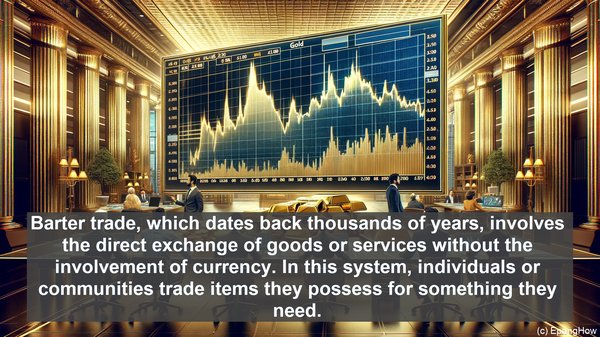Introduction: The Foundation of Trade
Greetings, fellow learners! Trade has been the backbone of human civilization, facilitating the exchange of goods and services. While the concept of trade is universal, the methods employed can differ significantly. Today, we’ll be focusing on two fundamental forms of trade: barter trade and monetary trade.
Barter Trade: The Ancient Exchange System
Barter trade, which dates back thousands of years, involves the direct exchange of goods or services without the involvement of currency. In this system, individuals or communities trade items they possess for something they need. For instance, a farmer might exchange a portion of their crop for tools from a blacksmith. Barter trade relies on the principle of double coincidence of wants, where both parties must desire what the other has to offer. While barter trade was prevalent in early societies, it had its limitations.
Limitations of Barter Trade
One of the major challenges of barter trade is the lack of a standardized measure of value. Unlike money, which serves as a universal medium of exchange, barter trade requires negotiating the value of each item. This can lead to disagreements and delays in transactions. Additionally, the indivisibility of certain goods, such as livestock or land, can pose challenges. For example, if a farmer wants to exchange a cow for a smaller item, finding an equitable trade can be difficult. These limitations paved the way for the emergence of monetary trade.

Monetary Trade: The Rise of Currency
Monetary trade revolutionized the way transactions were conducted. With the introduction of currency, a standardized measure of value became available. Money, in its various forms, such as coins or banknotes, serves as a medium of exchange, a unit of account, and a store of value. Unlike barter trade, where the value of goods is subjective, money provides a more objective and efficient means of trade. It enables transactions to occur smoothly, without the need for direct item-to-item exchanges.
The Advantages of Monetary Trade
Monetary trade offers several advantages over barter trade. Firstly, it enhances the divisibility of goods. With money, items can be priced and exchanged in smaller units, making transactions more flexible. Secondly, money facilitates specialization and the development of complex economic systems. In a barter system, individuals may be limited to trading only what they produce. With money, they can sell their goods or services and use the proceeds to acquire a wide range of items. This promotes economic growth and interdependence. Lastly, money provides a measure of wealth and enables the accumulation of savings, which can be invested for future gains.
The Coexistence of Barter and Monetary Trade
While monetary trade is the dominant form in modern economies, barter trade still persists, often in niche markets or as a supplement to monetary transactions. In some cases, barter trade can offer advantages, such as when dealing with unique or scarce items. Additionally, barter trade can foster social connections and trust, as it often involves direct interactions between individuals. However, for most day-to-day transactions, monetary trade is the preferred and more efficient method.

